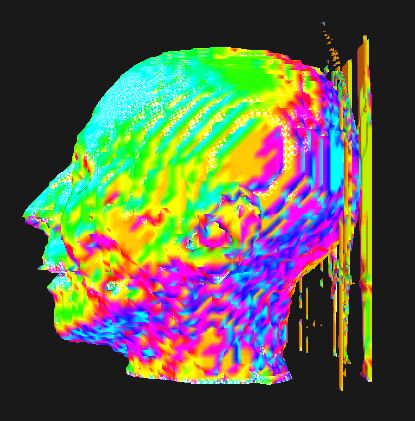| Uncertainty Visualization Methods in Isosurface Rendering |

|
We describe two techniques for rendering isosurfaces in multiresolution volume data such that the uncertainty (error) in the data is shown in the resulting visualization. In general the visualization of uncertainty in data is difficult, but the nature of isosurface rendering makes it amenable to an effective solution. In addition to showing the error in the data used to generate the isosurface, we also show the value of an additional data variate on the isosurface. The results combine multiresolution and uncertainty visualization techniques into a hybrid approach. Our technique is applied to multiresolution examples from the medical domain.
Three isosurfaces corresponding to skin, isovalue 0.185, with uncertainty disabled: (left) 1283, (middle) 643, (right) 323
The same three isosurfaces from with uncertainty mapped to hue in the range (144, 0): (left) 1283, (middle) 643, (right) 323
(left) An adaptive resolution isosurface corresponding to bone, isovalue 0.378, with uncertainty mapped to hue in the range (144, 0), (middle) uncertainty mapped to hue in the range (108, 0), 643, (right) uncertainty mapped to hue in the range (108, 0), 323
(left) A) Varying hue only, B) Texture of increasing opacity over constant hue, C) Increasing opacity over varying hue (middle) Error mapped to texture opacity over a constant hue, (right) Error mapped opacity over a hue mapped to a synthetic variate
In case of questions, comments, etc., please send mail to: Laramee "at" VRVis.at